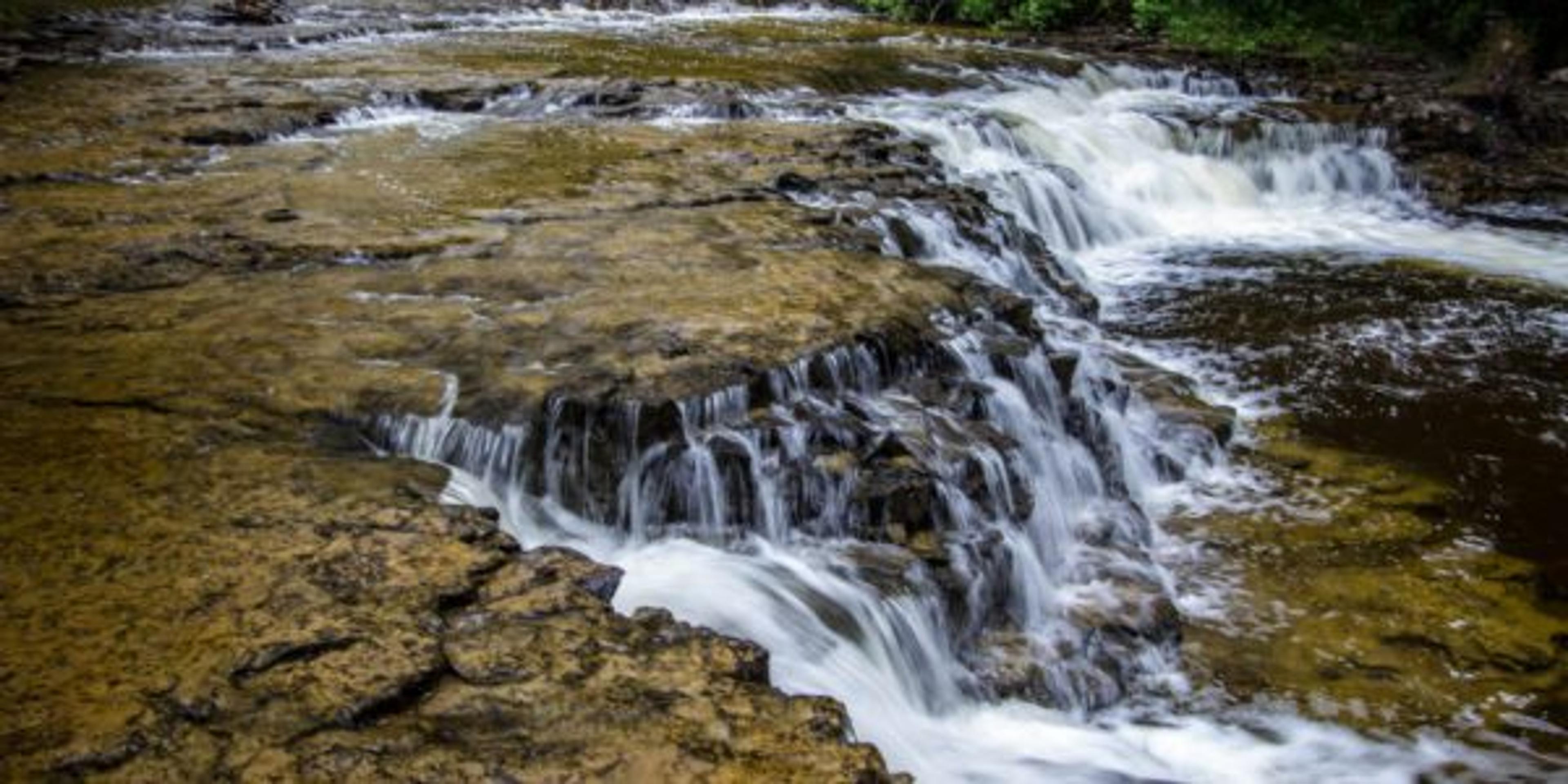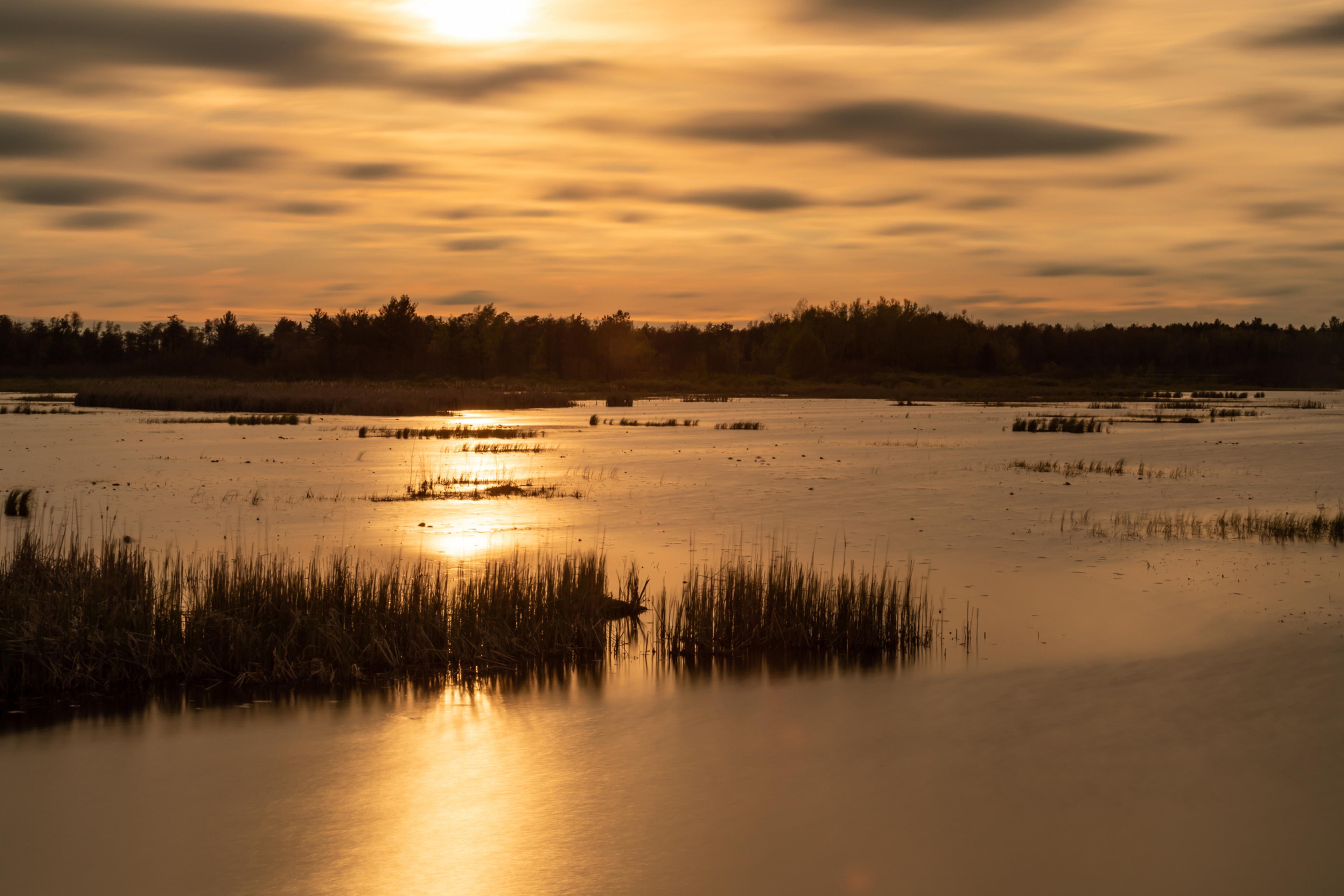Spotlight on Ocqueoc Falls, One of Michigan’s Few Universally Accessible Waterfalls
Shandra Martinez
| 3 min read

Michigan’s waterfalls are pretty amazing places to visit. The rush of water over rocks, the pools of cool water collecting down below, all make for scenic spots. One especially good waterfall to visit is Ocqueoc Falls near Rogers City in Presque Isle County. The fact that it’s the only publicly-owned waterfall in our Lower Peninsula makes it a gem to include on any daytrip or vacation. Making it even more significant and fun to use is that it was the first fully accessible waterfall in the United States. Its surroundings were renovated and designed by the Michigan Department of Natural Resources to encourage people of all abilities to get up close to the waterfall area and even enjoy splashing in the water.
Top of the Mitten spot. Ocqueoc Falls is fed its water from the Ocqueoc (pronounced Ah-key-ock) River. It’s a French name meaning “crooked waterway,” which is an apt description of the winding 34-mile long river that runs through this section of the northeastern tip of the Lower Peninsula. It’s one of the few rivers in this area that flow north, draining into nearby Lake Huron. If you live downstate and are headed up north, the area is also a great sidetrip to take to visit the falls.
Universally accessible. While Mother Nature gave the Michigan DNR a lot of what it needed to work with to create a waterfall area that’s accessible to people who have physical disabilities, mobility issues, or use mobility adaptive devices, there was still a lot of work that went into the project to make Ocqueoc Falls the first universally accessible waterfall a decade ago. The work was done during 2011 and the improved falls area opened in 2012 as the Ocqueoc Falls Bicentennial Pathway. It’s designated as a state forest hiking trail.
According the DNR, the area’s accessible features were designed to include:
- A wide, paved trail from the parking lot to the waterfall area. It’s wide enough to comfortably accommodate wheelchairs, walkers, motorized chairs and double strollers.
- Accessible picnic tables
- Trail benches designed with accessible spaces and cement pads
- Grills and trash cans at the appropriate height for accessibility
- Access to the river and falls area via a ramp or accessible rock formations arranged in tiers.
More accessible waterfall options. If you’re headed to the Upper Peninsula and looking for an accessible waterfall spot, you’re also in luck. Make the trip to Tahquamenon Falls near Paradise, in the northeastern section of the U.P. While Tahquamenon’s showy Upper Falls get all the attention as the largest waterfall in Michigan – and one of the largest in the northeastern U.S. – the Lower Falls area has some new accessibility features that have been delighting visitors.
In the fall of 2021, a new 142-foot aluminum pedestrian bridge was installed over the Tahquamenon River. It offers access to a small island in the middle of the Lower Falls – a spot that previously could only be reached by rowboat. The Lower Falls area is actually a handful of small waterfalls that flow around this island. The area is about four miles downriver from the Upper Falls.
With the new bridge, visitors can walk or use wheelchairs or other adaptive devices to reach the small island with its perimeter trail and beautiful views.
Related:
Photo credit: Getty Images





